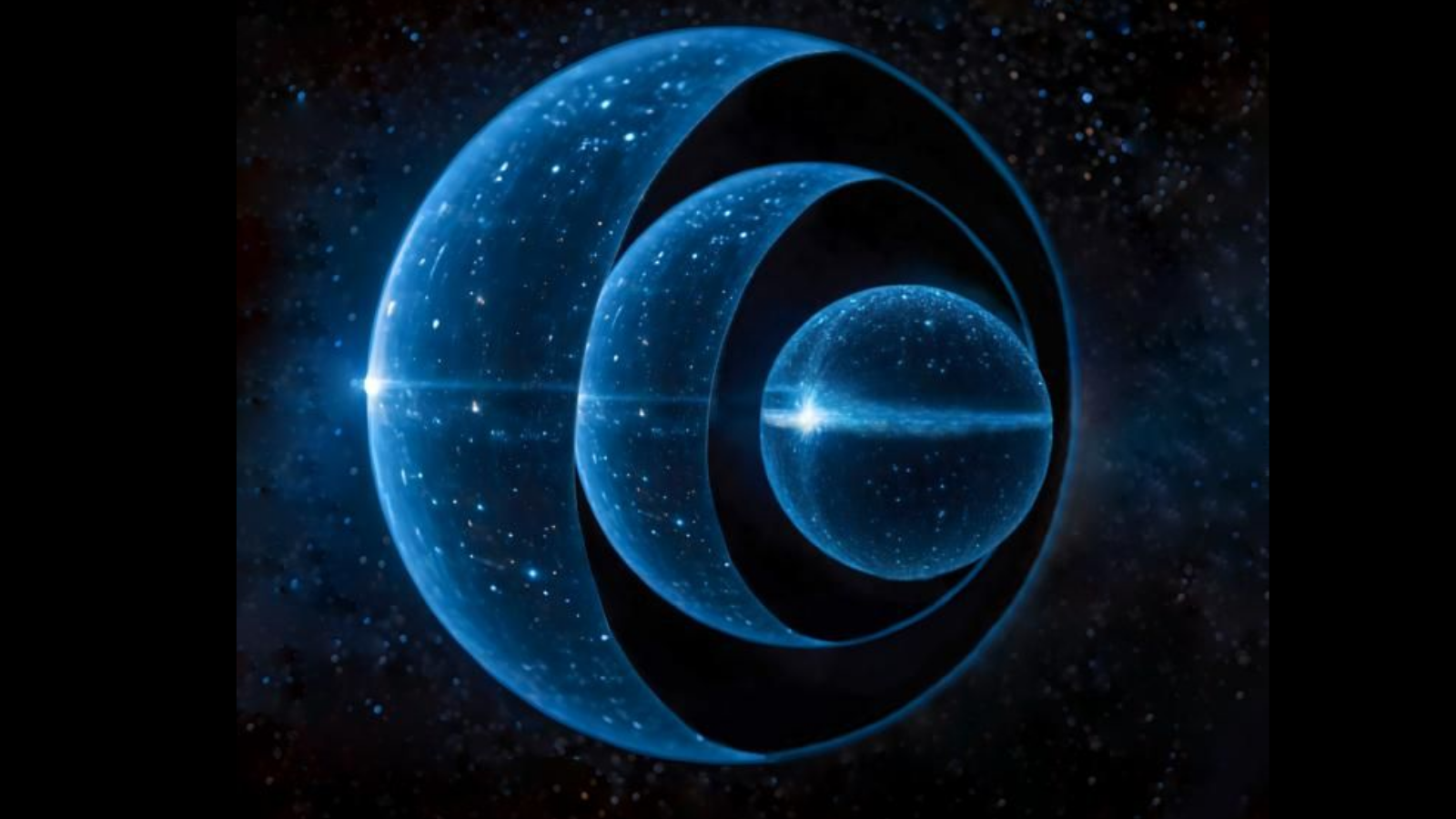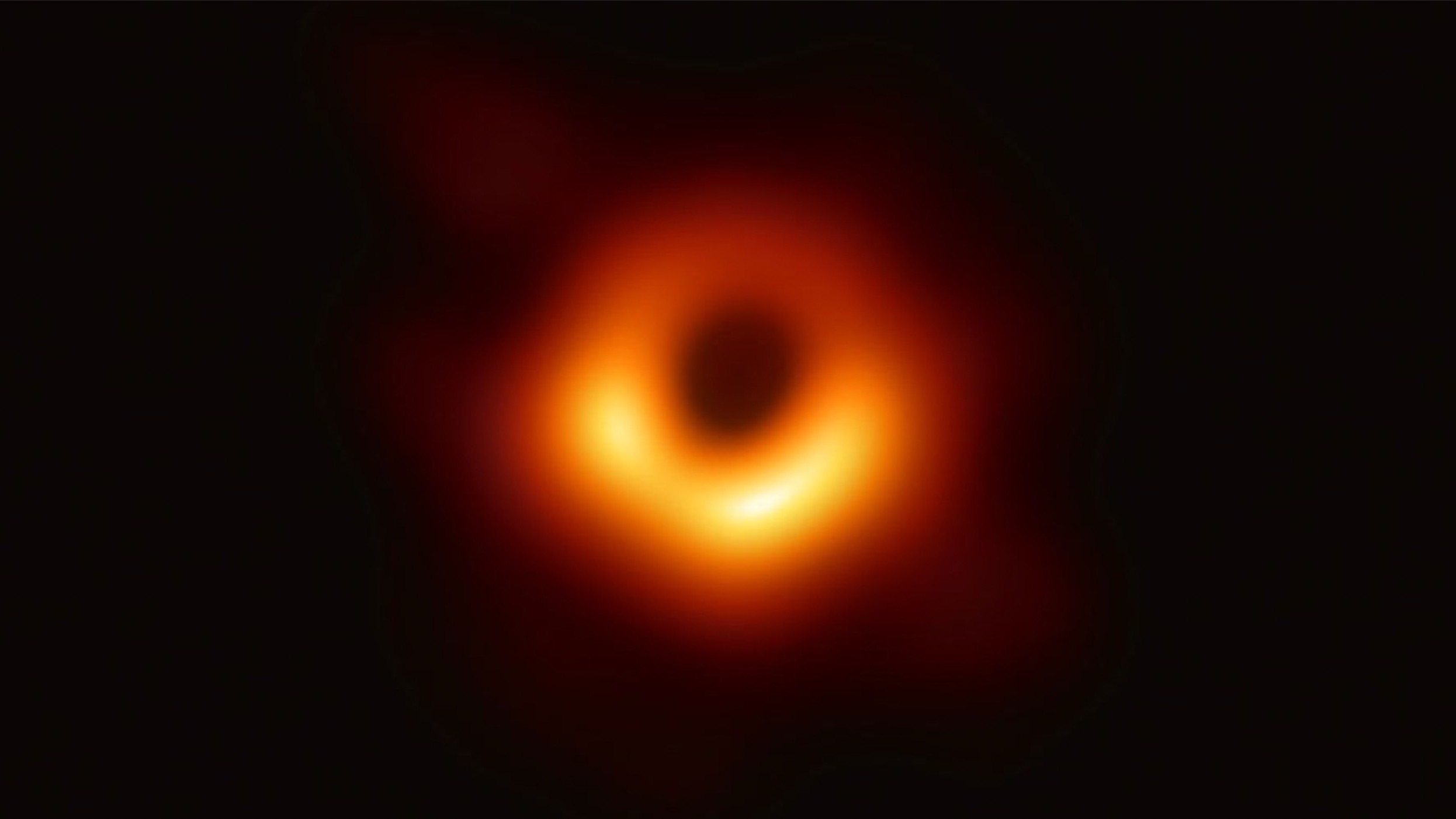Black hole-like 'gravastars' could be stacked like Russian tea dolls
A new solution to Albert Einstein's theory of general relativity suggests hypothetical gravitational stars that look like black holes could be nested within one another.

A newly developed solution to the equations at the heart of Albert Einstein's most revolutionary theory suggests hypothetical stars called "nestars" could be made from stacked gravitational stars, or "gravastars," like Russian tea dolls, also known as matryoshka dolls.
One of the most impressive things about Einstein's 1915 theory of gravity, general relativity, is just how many incredible cosmic objects its central equations have predicted.
As well as predicting that gravity arises from objects of mass curving the fabric of spacetime, general relativity spawned theories of black holes and the ripples they create in that fabric called gravitational waves. Both of these things have had their existence confirmed through observation; anti-black holes called white holes, and "wormholes" that potentially linking them with black holes, are other general relativity-based ideas that have remained purely theoretical, however. Only time will tell whether Einstein can be marked as right once again on that front.
To that end, another theoretical idea that emerged from general relativity in 2001 is the concept of "gravastars," or compact bodies with dark energy cores. Dark energy is the force that appears to be accelerating the expansion of the universe. In gravastars, scientists believe dark energy would exert a negative pressure to protect the stars against their own inward gravitational forces.
And now, a new solution to general relativity suggests another interesting aspect of such so-called gravastars. They could be stacked, one within the other, to create a sequence of "nestars."
Related: 'Missing link' supernova connects star's death to birth of black hole or neutron star
"The nestar is like a matryoshka doll; our solution to the field equations allows for a whole series of nested gravastars," one of the solutions developers, Goethe University theoretical physicist Daniel Jampolski, said in a statement.
Breaking space news, the latest updates on rocket launches, skywatching events and more!
Meet gravastars like black holes but different
Just a year after general relativity theory were released to the wider science community, and while serving on the front line of the First World War, German physicist Karl Schwarzschild developed the first solution to its field equations, astounding even Einstein who believed a solution would take years to develop.
Within the Schwarzschild solution were two features that would eventually birth the black hole concept. The German physicist predicted that, at a certain radius from a body with mass, the velocity needed to escape that body would have to increase to more than the speed of light.
For most bodies, this co-called Schwarzschild radius would be deep beneath their surface; for the sun, for example, it would be located 1.9 miles (3 kilometers) from the heart of our star, which has an overall radius of 434,000 miles (700,000 kilometers). But, if a star could collapse and its radius shrank below the Schwarzschild radius, this would result in a body with an outer boundary from which not even light could escape. This led to the concept of the black hole event horizon.
Even more curiously, the Schwarzschild solution suggested that there could be a point at which matter is so dense that even general relativity equations themselves must break down. This became known as the central singularity of a black hole, where all known physical theories cease to have any meaning.
These concepts were verified in 1971 when humanity discovered the first black hole, followed in the 2000s by the discovery that a strong radio source at the heart of the Milky Way is indeed a supermassive black hole with a mass 4.5 million times that the sun. This enormous void in our galaxy is called Sagittarius A* (Sgr A*.)
The visual form of black holes, as painted by general relativity, was also incredibly confirmed in 2019 when an image of a glowing ring of material around the supermassive black hole at the heart of the galaxy Messier 87 was revealed to the public by the Event Horizon Telescope collaboration.
Gravastars, or "gravitational condensate stars," were theorized by Pawel Mazur and Emil Mottola in 2001 as an alternative to black holes.
From the perspective of theoretical physicists, gravastars have several advantages over black holes. They are almost as compact as black holes and have a gravitational influence at their surface that is essentially as strong as that of a black hole, thus bearing a strong resemblance. But, there are key differences. For one, gravastars do not have event horizons and thus don't seal light, and thus information, behind a one-way "screen." Second, there wouldn't be a singularity at the hearts of gravastars, which instead are thought to have hearts of dark energy.
This recipe for gravastars cooked up by Mazur and Mottola includes a near-infinitely thin skin of ordinary matter that is difficult for scientists to explain. Nestars do away with this, suggesting the "stacking" bit would lead to a somewhat thicker shell of matter.
"It’s a little easier to imagine that something like this could exist," Jampolski said.
Of course, however, just because general relativity field equations allow for some object to exist in the cosmos, that doesn't mean the object must exist.
"Unfortunately, we still have no idea how such a gravastar could be created," nestar theory co-developer and Goethe University theoretical physicist, Luciano Rezzolla, said in the statement. "But even if nestars don't exist, exploring the mathematical properties of these solutions ultimately helps us to better understand black holes."
Research like this is also useful, even if the primary theory doesn't pan out, because it shows reveals wonderful avenues that are born from a theory that was first considered over a century ago.
"It's great that even 100 years after Schwarzschild presented his first solution to Einstein's field equations from the general theory of relativity, it's still possible to find new solutions," Rezzolla concluded. "It's a bit like finding a gold coin along a path that has been explored by many others before."
Thisresearch was published on Feb. 15 in the journal Classical and Quantum Gravity.

Robert Lea is a science journalist in the U.K. whose articles have been published in Physics World, New Scientist, Astronomy Magazine, All About Space, Newsweek and ZME Science. He also writes about science communication for Elsevier and the European Journal of Physics. Rob holds a bachelor of science degree in physics and astronomy from the U.K.’s Open University. Follow him on Twitter @sciencef1rst.

